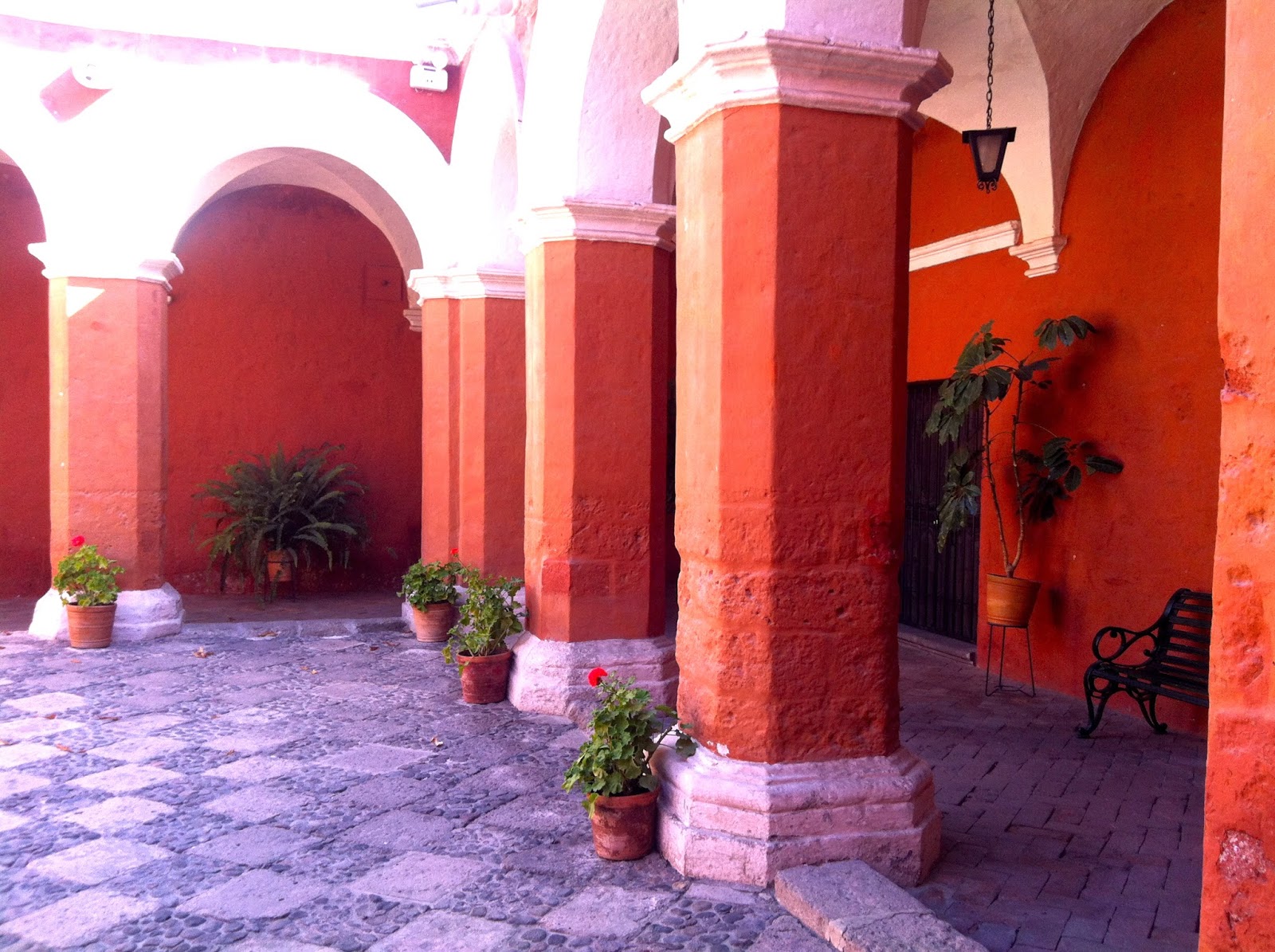So I'm going to go ahead and not go in order of the trip. So in that case... we are going to skip right to the end. Arequipa was the last city that I was in before I had to fly back to Lima in order to fly back home. I was only there for a day and really... we didn't see much. We got in on the bus at 4:30am and so we found a hostel and went to bed since... lets be honest, nobody sleeps well on the bus. It was also an emotional day for both of us. We were having so much fun for two weeks and then all of the sudden I had to go home. Neither one of us was ready. Once again it was bitter sweet. So.... I didn't take many photo's and there are none of the two of us. Or either one of us.
It's a shame I only got one day in this city, because it was a beautiful city. I'm glad I got to see it though, even if it was very brief.
The big thing to do in Arequipa is visit the Santa Catalina Monastery. The entire time John and I were walking through this big and beautiful Monastery, I just kept thinking of Sister Act, the Sound of Music (Nobody solves a problem like Maria) and lots of Nacho Libre quotes. Is that bad?
Anyway... here is the Wikipedea summary of the Monastery.
It was built in 1579 and was enlarged in the 17th century. The over 20,000-square-meter monastery was built predominantly in the Mudéjar style, and is characterized by its vividly painted walls. There are approximately 20 nuns currently living in the northern corner of the complex; the rest of the monastery is open to the public.[citation needed]
The foundress of the monastery was a rich widow, Maria de Guzman. The tradition of the time indicated that the second son or daughter of a family would enter a life of service in the Church, and the monastery accepted only women from upper class Spanish families. Each family paid a dowry at their daughter's admission to the monastery. The dowry expected of a woman who wished to enter as a choir nun--indicated by wearing a black veil—and who thereby accepted the duty of the daily recitation of the Divine Office, was 2,400 silver coins, equivalent to about $150,000 (U.S.) today. The nuns were also required to bring 25 listed items, including a statue, a painting, a lamp and clothes. The wealthiest nuns may have brought fine English china and silk curtains and rugs. Although it was possible for poorer nuns to enter the convent without paying a dowry, it can be seen from the cells that most of the nuns were very wealthy.
In 1871 Sister Josefa Cadena, O.P., a strict Dominican nun, was sent by Pope Pius IX to reform the monastery. She sent the rich dowries back to Europe, and freed all the servants and slaves, giving them the choice of either remaining as nuns or leaving. In addition to the stories of outrageous wealth, there are tales of nuns becoming pregnant, and amazingly of the skeleton of a baby being discovered encased in a wall. This, in fact, did not happen in Santa Catalina, and there are rumors of the same story in the nearby Santa Rosa monastery, as well.
At its height,the monastery housed approximately 450 people (about a third of them nuns and the rest servants) in a cloistered community. In the 1960s, it was struck twice by earthquakes, severely damaging the structures, and forcing the nuns to build new accommodation next door. It was then restored in stages by groups including Promociones Turisticas del Sur S.A. and World Monuments Fund and opened to the public. This also helped pay for the installation of electricity and running water, as required by law.
Some pictures I took while we walked around.The main park in the middle of the city. It was beautiful. I wanted to feed the birds.












1 comment:
Oh, I would have been quoting Nacho Libre all over the place. That looks amazing, yet again.
Post a Comment